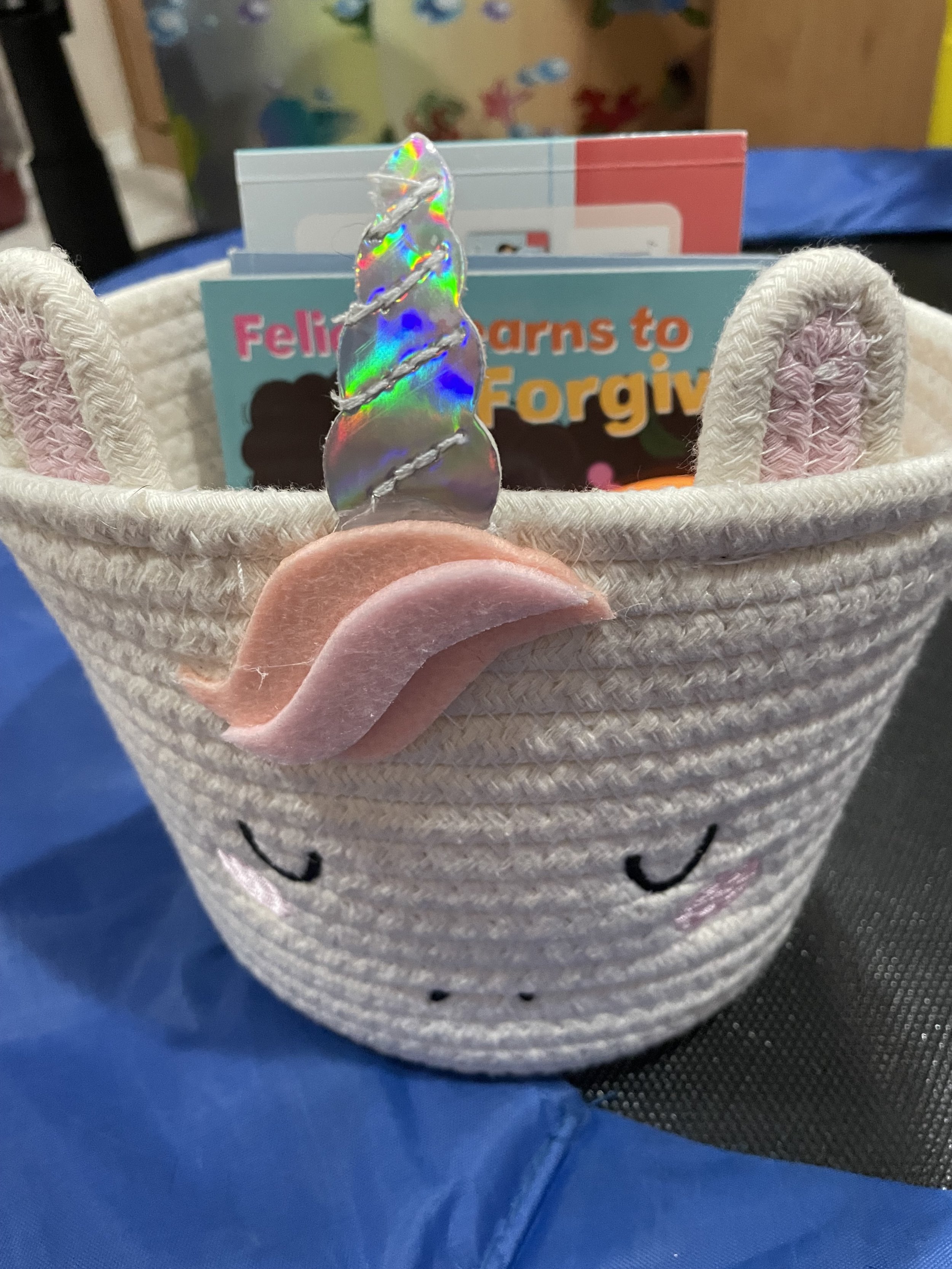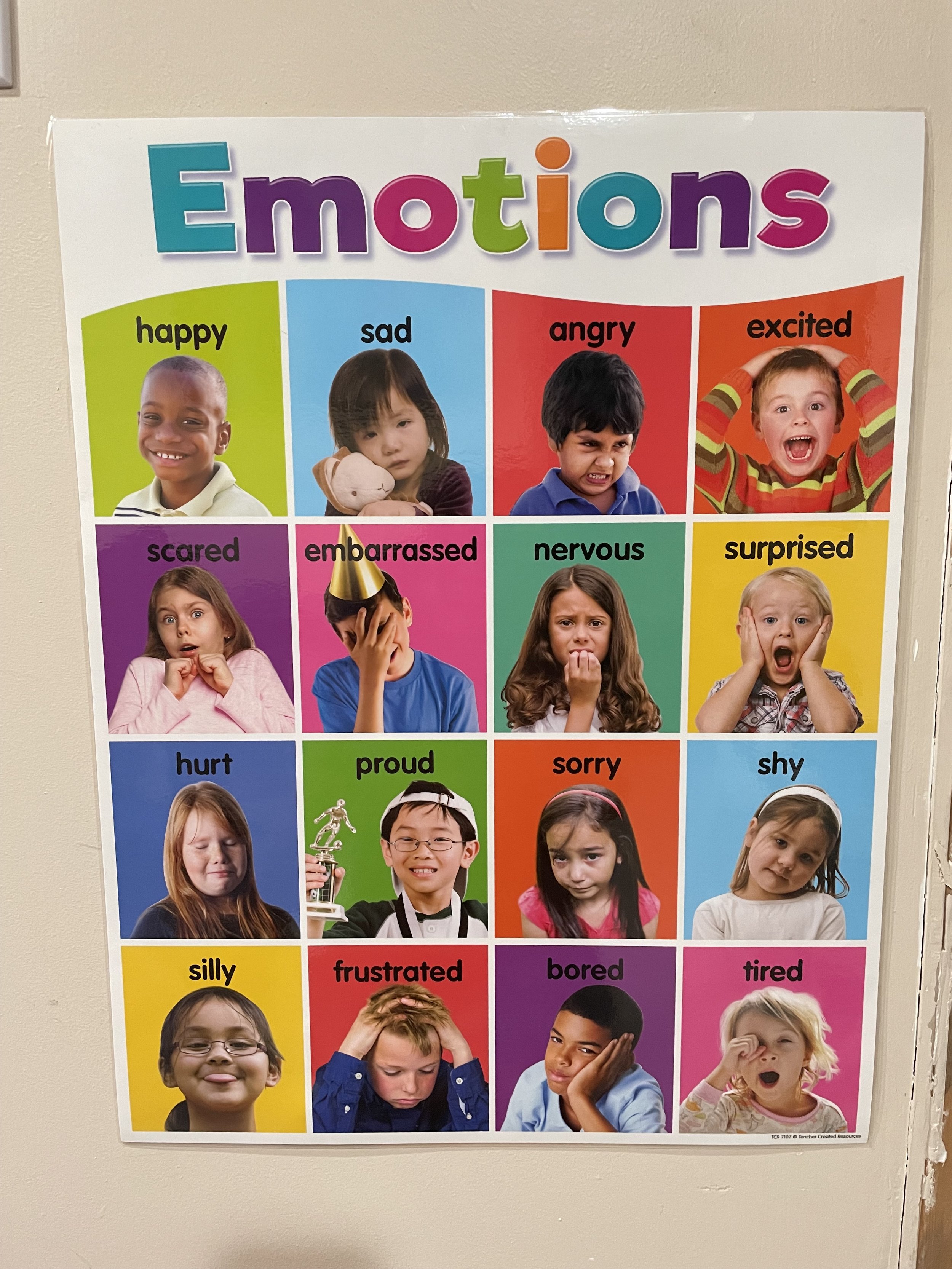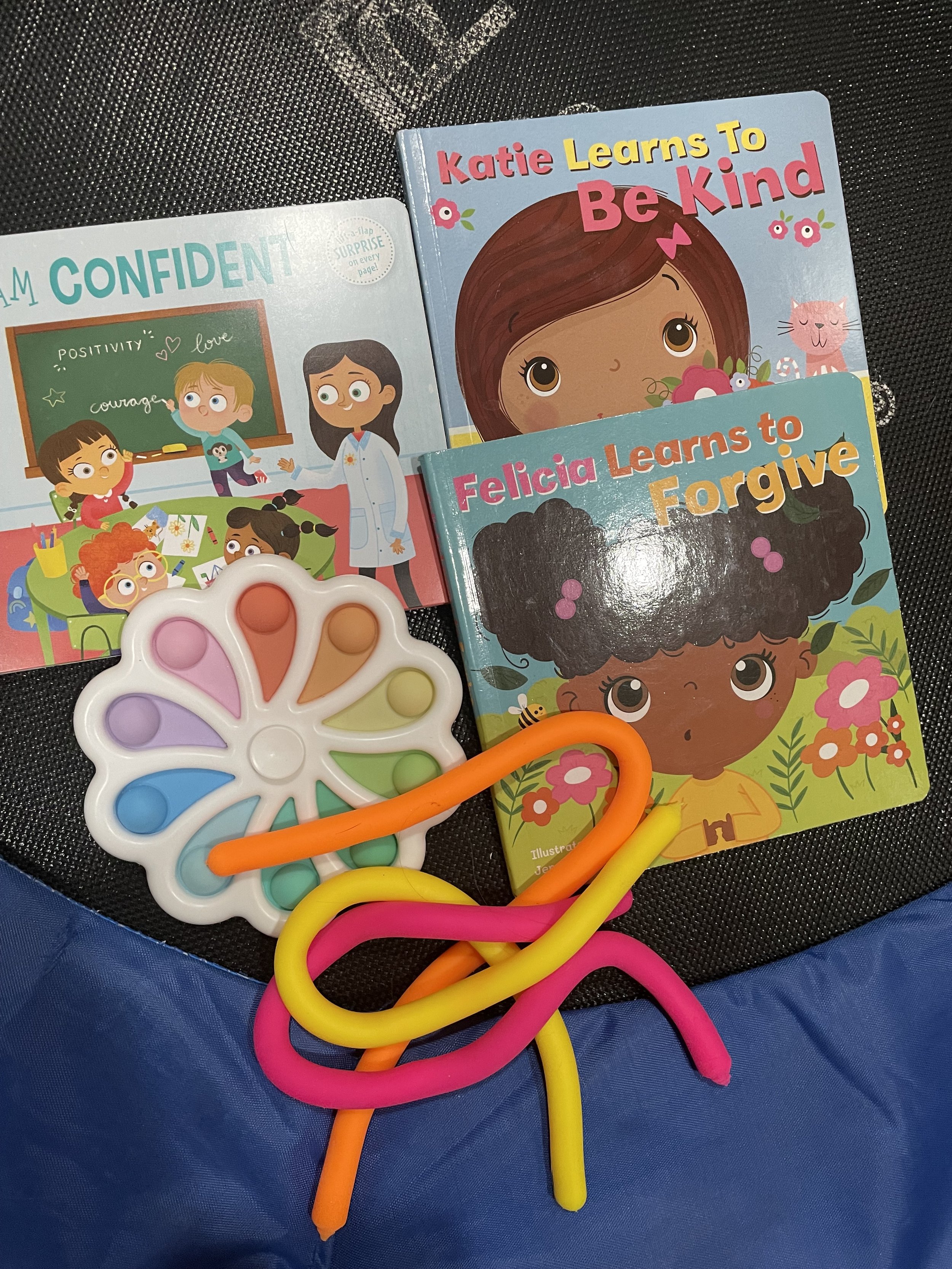Calming Corner
During my research of what to include for my daughter’s in-home learning space, I saw several homeschooling spaces include some form of a calming corner. This space serves as a safe place to help children acknowledge, address and digest their little, yet big, feelings. I loved the idea so much I had to add this to our learning space because I want ensure my daughter learns how to properly identify and cope with her emotions. One thing I love most about utilizing this space is how it takes away the negative tone out of time-out and provides a more positive way of addressing real life situations and emotions.
When introducing the calming corner to my daughter I simply laid out the area by talking through the items we have and why they are in this particular corner. Talking through each item sets expectations for us both to to ensure we are on the same page of how to best use this space. I bought an emotions chart with various feelings (happy, silly, frustrated, sad, bored, etc.) that assists in expressing her feelings. Each time we enter our learning space I ask her to share how she is currently feeling. I give room for both of us to share as a bonding moment. I made this area as comfortable as I could by placing a comfy chair, a blanket, fuzzy rug, a pillow and stuffed animals to make the space inviting and warm. Again, this is not time out. Make this area a place your child wouldn’t mind spending time in. There’s also a small basket filled with a few fidget toys to distract and free her mind. Whether we use the items in the basket together or she explores them herself, is completely up to her. Things like a pop it, play doh, spinners or a stress ball are great for this corner. Really any NEW sensory toy will be exciting for them. Be sure to let them know these items are only for the calming corner. They will try to take them other places but it’ll lose it’s value if they are able to play with it at any time. The last -important- items in our calming corner are books. We have books about forgiveness, love, kindness, joy and confidence (just to name a few). I switch the books out based on what I feel we need to talk more about. You know your toddler best. So including books that target the feelings they express most is a great resource to assist you in teaching them how to cope.
Now that you’ve got the gist of what’s in our corner, here are a 8 things to keep in mind when using the corner.
Calming corners are good for both parent (teacher) and toddler. If you’re honest with me, most importantly yourself, then I know you understand losing your cool once in a while on your kids. No shame, you didn’t mean to. But that one particular day they push your buttons, unintentionally, a bit too far. You too may need a moment to yourself. Practice recentering yourself by using the calming corner in front of your toddler. This will help make this space realistic for them.
When available turn lights down low wherever you are and turn on calm music (instrumentals, worship music, etc.).
Calmly let your child know you cannot talk when they are yelling, screaming or throwing a fit of any kind. Explain you will give them attention when they have calmed themselves. This may take some time. It may also require you repeating yourself several times. Be patient! Practice deep and controlled breathes while encouraging them to join in.
Give them 5 - 10 minutes depending on how they are feeling and adapting to calming down.
Remember their little minds cannot process as much as we can at once. Once they have calmed down provide positive feedback. “Good job taking deep breaths” or “I saw how you held your pillow until you were able to stop crying, good job calming down”.
Address big feelings later when they’ve had time to separate that moment and their feelings. Bed time/nap time is a great opportunity to recap the events that took place.
Ensure they understand calming corner and big emotions does not mean they are in trouble. You both are learning how to manage the feelings together.
Create calming corners wherever you go. You may not always be at home or have immediate access to your child’s calming corner when your child is experiencing big emotions. That’s okay. Just be prepared. When you are out, create a quiet area, away from distractions and other people. Keep a fidget or a stuff animal in your purse. Only pull it out when necessary and guide them through deep breaths.




